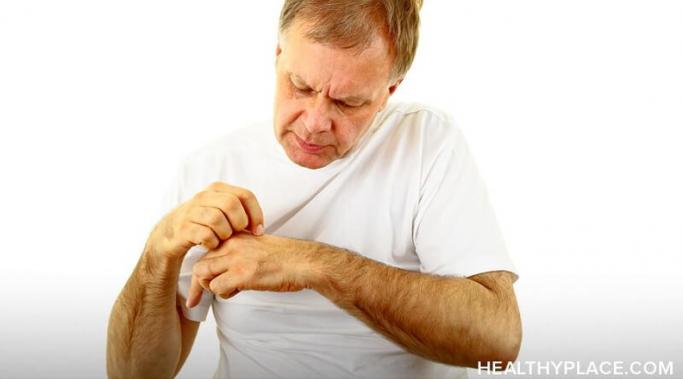“All Self-Harmers are Suicidal and Seek Attention”
That statement is, sadly, the ultimate stigma of self-harm. The media has played a small part with this stigma, portraying self-injurers as being the ones who sit quietly in the corner, cutting their arms and crying. (read: Self-Injurers and Their Common Personality Traits)
Wrong.
Sadly, this is how many people see self-harmers when, in reality, many self-harmers do not fit into a particular clique. In high school, I was a typical music geek. I was a serious ballet dancer, performed in musicals, and did Colorguard in the marching band. I laughed along with friends and pushed out a smile when teachers walked by.
However, leather bracelets covered the self-harm scars I was trying to hide and bathrooms were where I hid when I couldn’t stop the thoughts in my head from yelling at me – telling me to hurt myself. I did not feel as talented as those around me and put on a charade day after day. I was not cutting myself to kill myself every time I made a mark.
I was cutting for reasons that those around me couldn’t understand.
Speaking Out About Self Injury
Finding healthy alternatives to self-injury can be stressful. Sometimes, it’s tough finding someone who understands the emotions and thoughts connected with self-harm. Many people hate thinking about counseling or talking about their self-harm because, well, it is too personal.
So, if you’re too nervous to jump into therapy or tell someone you self-injure, where can you go? What can you do?
Why not dive into a good book? A TV show? A movie?
Biting nails. Popping zits. Picking blisters. Scratching scabs.
Who can honestly say they have not done any of the above? If you said you haven’t, I do not believe you. We are all human and we all have little habits we do, sometimes without even realizing it. Some people will spend fifteen minutes in the mirror just picking at the pimples or zits or blackheads on their face. Before a big test, people tend to bite their nails and hangnails, sometimes until they bleed.
Surprise, surprise – these are self-harming behaviors.
I am a childhood cancer survivor and have an obsession with vintage typewriters. I have a Mini Schnauzer named Sir Theodore Rufus and still walk like a chicken from dancing ballet for seventeen years. I have a Bachelor's Degree in Child and Family Studies and collect crazy-looking journals everywhere I go. I have a liking for tattoos and sometimes wish I was a Broadway star.
Did I mention I was a cutter?
Christie Stewart
For part two in my Self Injury Awareness Day video series, I sat down for a one-on-one interview with singer/songwriter Chris Pureka, the artist who provided the song “Cruel and Clumsy” for my awareness project. In the interview, we talk about using writing as a healthy coping mechanism and self-injury alternative, as well as what it’s like to write songs that deal with such deep and painful subjects, like self-harm, depression and suicide.
Christie Stewart
On March 1, which is widely known as "Self Injury Awareness Day", I put together a video collaboration with people across the globe to inspire awareness, hope, love, and recovery for mental illness and self-injury.
Christie Stewart
This week, I'm focusing on healthy alternatives to self-injury as a followup to my previous article about using natural supplements to calm anxiety and self-injury urges.
Contrary to popular opinion, I do not believe that cathartic techniques suggested by many treatment centers, books and websites are beneficial to coping with self-injury urges. These techniques can include:
snapping a rubber band against the wrist
coloring on your arms with a red pen
holding an ice cube to your skin
hitting, punching or breaking items.
Christie Stewart
In my last video blog post, I explained how and why anxiety can lead to self-injury; how many people who suffer from anxiety often engage in self-harming behaviors in order to cope with their anxiety symptoms. In this video, I focus on natural vitamins and supplements you can use to combat your anxiety, and therefore lessen your urge to self-injure when triggered by anxiety and panic.
Christie Stewart
It is common for people who have anxiety to engage in self-injury as a coping mechanism, to help reduce the symptoms of anxiety and induce feelings of numbness, or even euphoria. In this video blog, I explain why self-injury seems to calm anxiety in some people -- and why, ultimately; it is an unhealthy coping mechanism that should be replaced by healthy ones.
Christie Stewart
In this video blog, I discuss how to talk to your family and friends who may be in denial about your mental illness - or simply do not believe you at all. I have experienced this personally, and what I have learned is -- some people you can reason with, and others you can't. Here are some tips on how to deal with family in denial, and when to move on from those who won't understand, no matter what you do.




